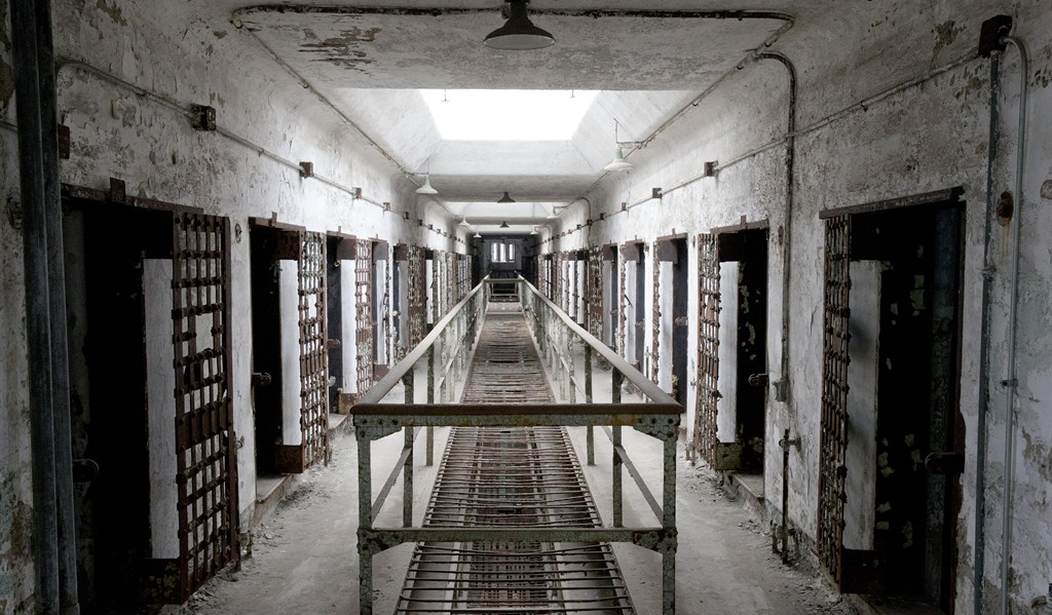The U.S. has almost 4,500 federal crimes on the books, with an estimated additional 300,000 federal regulatory violations potentially punishable with criminal penalties. With 320 million people, we make up 5 percent of the world’s population, but our 2.2 million people in federal or state prisons or local jails make up 25 percent of the world’s incarcerated population.
That 2.2 million figure is a 500 percent increase since 1980, by the way. Our federal prison population has grown by almost 800 percent in that time, from 25,000 to 220,000. When you add in more than 4.5 million adults on probation or parole, we now have almost 7 million Americans in federal or state correctional systems.
And those correctional systems aren’t cheap. Annual federal prison spending has risen 595 percent since 1980, from $970 million to more than $6.7 billion. A minimum-security federal inmate now costs $21,000 a year, while a high-security inmate costs $33,000. And the costs are even higher in many states.
But here may be the biggest risk of all: As more and more researchers delve into criminal justice, there is concern that a system conceived to correct a problem (they are called correctional systems, aren’t they?) may actually just perpetuate it. By locking up low-level, non-violent offenders for extended sentences — often decades — each person loses countless opportunities for redemption in their formative years. When they reenter society, they are playing catch-up.
Do you think they’re going to get a job at a cell phone store? Will they be brought on somewhere to install new cable boxes in customers’ homes? Will they be approved to lease an apartment in a new town? What about applying for a loan after no credit history for 20 years? It’s really hard to get back into the stream of commerce and the flow of life when technology has passed you by and you’re haunted by a stigma that is virtually impossible to shake, even though you’ve already paid your debt to society.
Recommended
As states across the country noticed this a few years ago, several began taking a serious look at criminal justice reform. Since 2007, more than two dozen states have passed significant reforms designed to prioritize prison beds for serious offenders, reduce incarceration and recidivism rates, and contain costs. While the federal imprisonment rate has been rising, state rates actually have been declining.
Texas, Georgia, South Carolina, Kentucky and others have seen real reform in their correctional systems and Texas, for example, now has its lowest crime rate in decades. They are proving you can be “smart on crime” and “tough on crime” at the same time. As verdicts are coming in from states around the country, Washington, D.C., has finally taken notice.
Earlier this year, two members of the Senate Judiciary Committee, Sens. John Cornyn (R-TX) and Sheldon Whitehouse (D-RI), laid out the CORRECTIONS Act to help non-violent offenders avoid returning to crime after being released. Though the Act would not be available for those convicted of violent crimes like murder, terrorism, or sex offenses, non-violent offenders would undergo a risk assessment to determine whether they present a low, medium or high risk of re-offending.
Those deemed low or medium risk could earn up to 25 percent off of their sentences by participating in recidivism reduction programs, including drug treatment or job training. Since more than 55 percent of federal inmates now are considered low or minimum security, meaning they pose minimal security risk to the general public, the number of people potentially impacted by this policy could be profound.
Cornyn and Whitehouse also have said they are open to considering additional measures, and a bi-partisan criminal justice bill moving through the Senate has proven to be an excellent catalyst for a larger conversation about criminal justice reform that now is robust and real.
Worthwhile reform always takes vision, courage and perseverance, and justice reform will be no different. But glimmers of hope across the country, and now in D.C., of cooperation across the political divide bode well for criminal justice reform and we think that bodes well for our governing system at-large. Faith & Freedom Coalition is working with the U.S. Justice Action Network to address the needed reform of our justice system because we believe redemption can be found in the most unlikely of places — even in our prison system.

























Join the conversation as a VIP Member